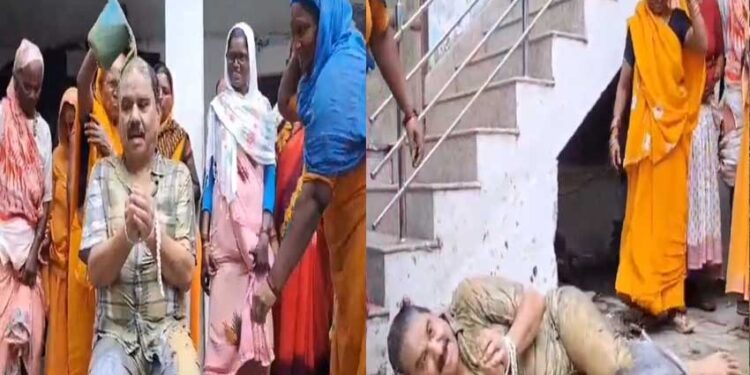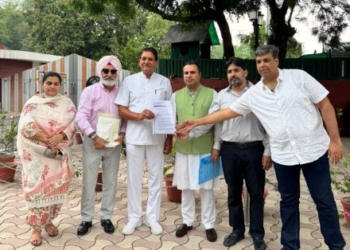Bal Gangadhar Tilak (English: Bal Gangadhar Tilak, born- 23 July, 1856, Ratnagiri, Maharashtra; died- 1 August, 1920, Mumbai) was a scholar, mathematician, philosopher and fierce nationalist who helped lay the foundation of India’s independence. He founded the ‘Indian Home Rule League’ in 1914 and was its president and in 1916 signed the Lucknow Pact with Muhammad Ali Jinnah, which provided for Hindu-Muslim unity in the struggle for independence.
Bal Gangadhar Tilak was born on 23 July 1856 in Ratnagiri, India. His full name was ‘Lokmanya Shri Bal Gangadhar Tilak’. Tilak was born in a cultured, middle-class Brahmin family. His father’s name was ‘Shri Gangadhar Ramchandra Tilak’. Shri Gangadhar Ramchandra Tilak was first an assistant teacher in Ratnagiri and then became an assistant sub-educational inspector in Pune and then in ‘Thane’. He was a very popular teacher of his time. He wrote books on ‘Trigonometry’ and ‘Grammar’ which were published. However, he did not live long enough to complete his son’s education. Lokmanya Tilak’s father ‘Shri Gangadhar Ramchandra Tilak’ died in 1872.
Bal Gangadhar Tilak became an orphan at the age of 16 after the death of his father. He continued his education without any interruption and passed the matriculation examination within four months of his father’s death. He joined ‘Deccan College’ and then passed the BA Honours examination from there in 1876. In 1879, he passed the LLB examination from Bombay University and while studying law, he made friends with ‘Agarkar’ who later became the principal of ‘Ferguson College’. Both friends spent many nights thinking about the best plan they could make to serve the countrymen.
After freeing himself from the burden of school, Tilak decided to devote most of his time to public service. Now he had some leisure. At this time, a bill to increase the age of consent for the marriage of girls was being brought before the Viceroy’s Council. Tilak jumped into this controversy with full enthusiasm, not because he was against the principles of social reform, but because he was against coercion in this area. The age of consent bill, no matter how laudable its objectives were, was actually an attempt to bring about reform in Hindu society through government intervention. Therefore, some staunch supporters of social reform were against it. On this issue, due to Tilak’s point of view, the society of Poona got divided into two parts, fundamentalists and reformists. The gap between the two kept increasing due to new differences and new quarrels.
The introduction was not very encouraging. The author humbly informs that the date of composition of the Rig Veda cannot be less than four thousand years before the birth of Christ and according to Hindu tradition it should be dated to 6000 years before Christ. Keeping in mind the tendency of Hindus to accept anything about their abundant imagination, I thought I would flip through a few pages of the book and put it aside with a smile. But after a while my smile disappeared and I felt that something extraordinary had happened. First of all I was impressed by the author’s statement that he had seriously studied the Vedic literature and the Western literature related to this subject. Soon my superficial study turned into serious study. Instead of a feeling of ridicule I began to be convinced by the author’s words. This book is undoubtedly going to create a sensation in the field of literature. It will take a long time to understand the implications of Tilak’s research.” It would have been better if Tilak had immediately moved forward in that direction and found solutions to many questions that were left unanswered in his book, but due to his work as a law lecturer and journalistic profession he did not have enough time to pay attention to questions related to linguistics and history.
Repeated appeals were made to the High Court. If the High Court had resolved a problem justly in time, it would not have to deal with the cases later, but the High Court reversed the decision of Mr. Aston cancelling the certificate of the will but allowed the criminal proceedings against Tilak to continue. So far as the charge of false complaint was concerned, Mr. Beeman found the sanction of prosecution against Tilak improper. But after a long trial, Mr. Clement, the Special Magistrate, found Tilak guilty of giving false evidence under oath and sentenced him to eighteen months’ rigorous imprisonment. The Magistrate, however, admitted that Tilak was not actuated by selfish motives, but in his view he was a maniac, and his mind was possessed by passion and love of power. But the clouds of trouble cleared. Mr. Lucas, the Sessions Judge, soon reduced the sentence to six months in an appeal and fully justified Tilak’s aims and motives. Mr. Lucas’s decision for punishment was not stable and supportable and on 4 March 1904, the High Court quashed it. The charge of giving testimony under oath was not proved, as a result the government withdrew all the charges against Tilak. Thus Tilak emerged as a diamond from this ordeal.
The judgment of Sir Lawrence Jenkins was for all practical purposes a judgment on the adoption case. The case built up against Tilak by the party of Tai Maharaj with the help of Mr. Aston collapsed like a castle of cards. On the basis of the facts made out in the dispute, Tilak was charged with giving false evidence under oath. But when the case proceeded in the High Court, the conspirators found that they themselves had fallen into the pit dug for Tilak. The case occupied all of Tilak’s time from 1901 to 1904. There were 160 sittings of the court for these proceedings. Tilak often had to appear in person during the sittings of the court. What made the case aggravating was that by prosecuting Tilak, the Bombay Government was indirectly fulfilling its hostility against him. He was fighting Tai Maharaj’s battle on the ground of adoption. It was an ominous combination of government hostility and a woman’s own personal interest.
We do not know what the reality was. Was Tai Maharaj a puppet in the hands of the government or was the government a puppet in her hands? The probability is that each of them used the other as a puppet and to some extent allowed itself to be used as a puppet. The sad thing in this context is that the government forgot its dignity and brought itself down to the level of an uneducated, selfish and irrational woman. As a result of all this, public interest in the case increased enormously, although the main focus of interest remained Tilak.
How Tilak could maintain his mental balance and carry on his normal activities without any disturbance during this period. How he maintained a cheerful attitude and became a source of intellectual inspiration for his legal advisors. How he could keep his mind free and isolated from the deep worries which were intensified by the death of his eldest son. How he could continue his beloved literary studies and publish his book ‘The Arctic Home in the Vedas’ – all these are subjects of research.
By the time Tilak returned home to attend the Amritsar meeting of the Congress in 1919, he had softened enough to not oppose Gandhi’s policy of boycotting the elections to the Legislative Councils established by the Montagu-Chelmsford Reforms. Instead, Tilak advised the delegates to follow his policy of ‘responsive cooperation’ in implementing reforms that introduced some degree of Indian participation in regional governments. But before the new reforms could be given a decisive direction, a meeting was held in Bombay on 1 August 1920. [11] Tilak died in 1938. Paying tribute to him, Mahatma Gandhi called him the maker of modern India and Nehru called him the father of Indian revolution.










